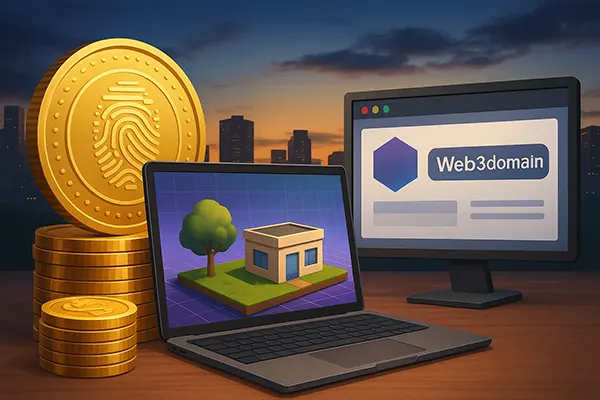New Forms of Passive Income: Renting Out Digital Assets
By 2025, the idea of passive income has evolved far beyond traditional investments. Alongside dividends, real estate, or bonds, people are increasingly turning to digital assets as a source of recurring earnings. Renting out NFTs, virtual land in the metaverse, or Web3 domains is becoming a serious option for investors looking to diversify their income streams. These assets carry unique risks and benefits, which makes choosing the right service and understanding the market essential.
Renting NFTs for Passive Income
NFTs, once known mostly for digital art and collectibles, are now widely used in gaming, entertainment, and digital identity. By 2025, NFT rental services allow owners to lease their tokens to players who cannot afford high-value assets but want access to in-game perks or exclusive memberships. This creates a sustainable market where both sides benefit.
Services such as reNFT and Double Protocol offer NFT leasing with secure smart contract mechanisms. These platforms ensure that borrowers cannot transfer or sell the rented NFT, while owners receive steady payments for lending out their assets. Fees and contract lengths vary, but the process is transparent and automated.
The main risks include volatility of NFT value and the possibility of platform vulnerabilities. Before renting out NFTs, investors should evaluate the liquidity of the asset, its demand, and whether the rental service has undergone third-party security audits.
How to Choose the Right NFT Rental Service
Start by checking whether the platform has an active user base and strong partnerships in gaming or entertainment. Without demand, your NFT may remain idle. Security audits are another critical factor, as they confirm the reliability of the smart contracts used for leasing.
Consider the flexibility of rental terms. Some services allow daily rentals, while others focus on longer commitments. For high-demand NFTs, short-term leases may be more profitable, while unique, rare assets often work best with long-term agreements.
Finally, compare fee structures. Some platforms charge flat service fees, while others take a percentage of the rental income. Make sure these fees align with your expectations and do not significantly reduce your profit margin.
Virtual Land in the Metaverse
Virtual land rentals represent another growing form of passive income. Popular metaverse ecosystems such as Decentraland, The Sandbox, and Otherside by Yuga Labs have created marketplaces where digital plots are leased to individuals or companies for events, advertising, or building experiences.
By 2025, virtual land rentals are used by brands hosting concerts, educational programmes, or virtual stores. Owners who lease their parcels can earn significant income depending on the plot’s location and popularity within the virtual world.
The risks are linked to demand fluctuation and regulatory uncertainty. While metaverse economies are expanding, not every project has staying power. Investors should focus on established worlds with active communities and proven track records.
Assessing Risks in Virtual Land Leasing
The first step is evaluating the metaverse’s user activity. If a project shows declining engagement, land value and rental demand may drop. Use data from analytics tools or community dashboards to track daily active users.
Location within the metaverse matters as much as in real life. Plots near event hubs or branded spaces usually command higher rental prices. When evaluating potential returns, consider whether your land is positioned strategically.
It is also vital to assess the platform’s long-term vision and financial backing. Projects with strong investors, developer support, and clear roadmaps are less likely to disappear suddenly, reducing the risk of losing your digital property value.

Web3 Domain Leasing
Web3 domains, such as those under Ethereum Name Service (ENS) or Unstoppable Domains, represent another digital asset with rental potential. Businesses and individuals seek memorable names for branding, identity, or decentralised applications, making short, relevant domains highly valuable.
By 2025, secondary markets for leasing Web3 domains have become increasingly professionalised. Owners can rent domains to projects that cannot afford outright purchases but still need branding opportunities. Leasing contracts are typically handled by smart contracts, ensuring safe and transparent transactions.
However, the risks include market saturation and the possibility that new naming systems could reduce the value of existing domains. Careful selection of relevant, brandable names remains crucial for success.
Best Practices for Web3 Domain Rentals
When leasing a domain, ensure that the contract includes clear terms on payment frequency, usage restrictions, and renewal rights. Some investors prefer short-term rentals to maintain flexibility, while others opt for multi-year leases to secure steady income.
Focus on domains with obvious commercial appeal. Generic names like “finance.eth” or “music.crypto” are more likely to generate demand than obscure or overly specific terms. Brandability and simplicity increase rental potential.
Finally, track competition and new naming standards. The Web3 ecosystem evolves quickly, and some domains may lose relevance. Diversifying holdings across different naming services can help balance this risk and provide more stable income.



